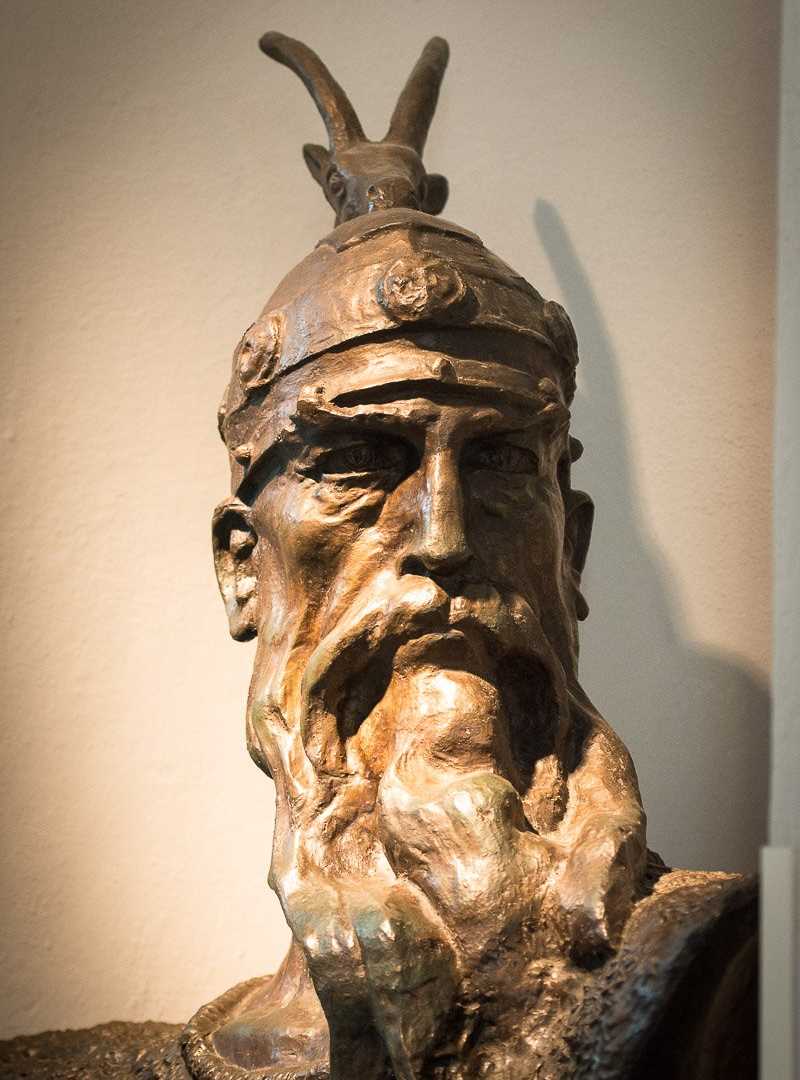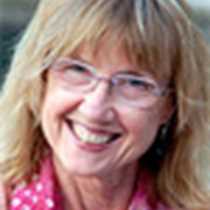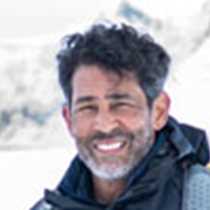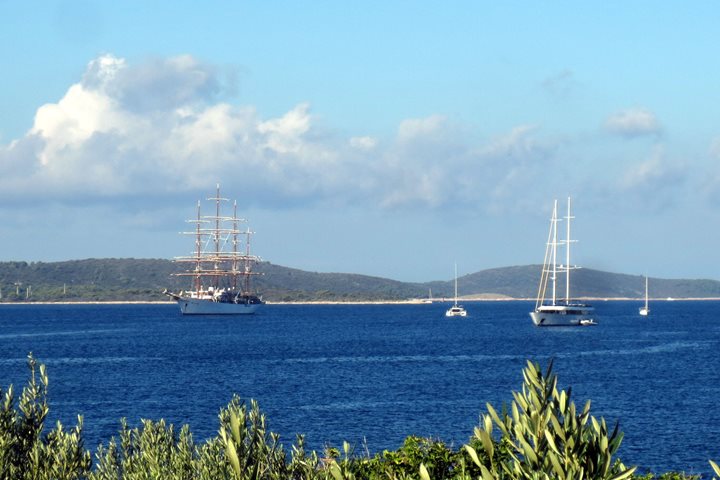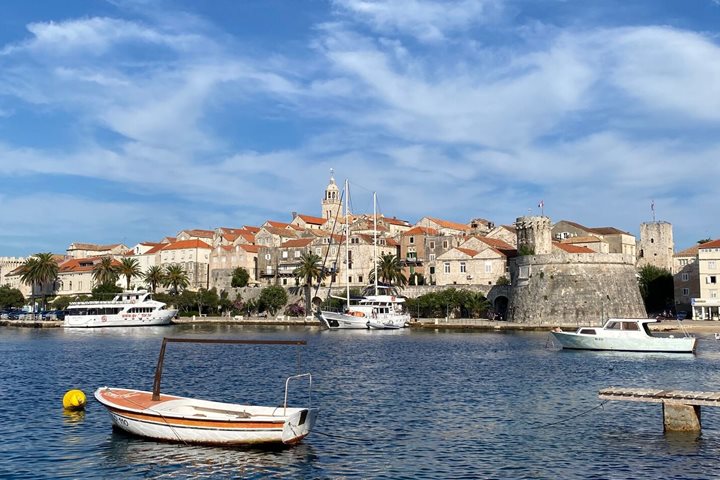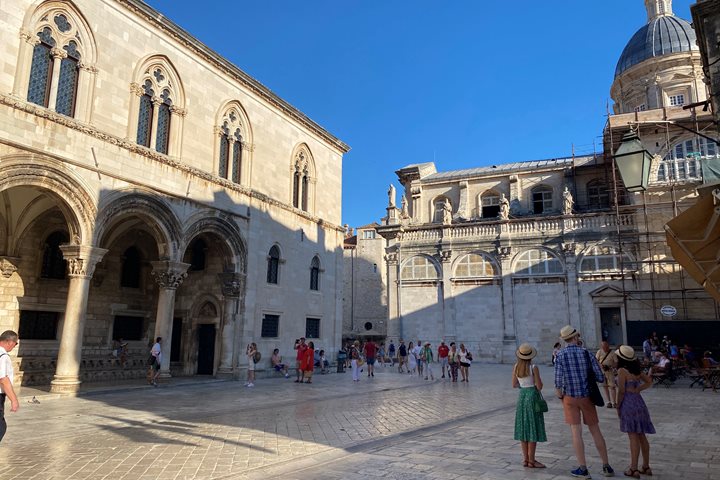Today was our first day in Albania, for many literally the first time in this small Balkan country, which under the communist regime had been closed to most foreigners for 50 years. We left Sea Cloud docked at Durres, whose rather prosaic appearance belied its heritage as the old Roman port of Dyrrhachium and the beginning of the Via Egnatia, the most direct overland route to Constantinople.
We passed through a countryside scattered with agricultural fields and grazing livestock alongside new industrial and residential construction. Our destination was Kruje, the old capital and mountain stronghold of George Kastrioti Skanderbeg. Built in 1982 the Skanderbeg Museum in Kruje was designed by the daughter of the former dictator, Enver Hoxha, to present the Albanians with the official national narrative as embodied in the life of Skanderbeg. Taken as a child hostage by the Ottoman Turks, forced to convert to Islam and serve in the Ottoman army, George Kastrioti distinguished himself in battle and earned the title of Skanderbeg (after Alexander the Great). Following a defeat in battle with Hungary, Skanderbeg took the opportunity to defect and return to his birthplace Kruje, where he gathered an Albanian force that managed to resist the Ottomans for almost 30 years.
Next door is the ethnographic museum, a former 18th century compound of a wealthy family and the model of self-sufficiency with a tannery, blacksmithy, distillery, and olive press downstairs. Our museum guide Mirko cheerfully demonstrated how many of these tools were used. Upstairs are the living quarters, with separate rooms for men and women, and even a small hamman (Turkish bath). Unlike the reproductions in the Skanderbeg Museum, the ethnographic museum has an extensive collection of antique implements and household articles from previous centuries, including an impressive collection of typical folk costumes from all regions of Albania. We then wandered down the cobbled streets of the medieval bazaar, which yielded some quality finds such as filigree jewelry and hand-loomed rugs to kitschy bunker ash trays.
Our next stop was the modern capital of Tirane for a traditional lunch at Bujtina e Gjelit (House of the Rooster). The family that owns the restaurant has their own farm that provides organic produce and meats. The array of choices (including vegetarian and vegan) was astounding from a wide selection of meze such as stuffed grape and cabbage leaves, beets, tarator (yogurt and cucumber dip) and small cherry tomatoes that were an explosion of sweetness in our mouths. There were hot dishes as well: roasted meats with potatoes, sautéed peppers with onion and tomato, byrek (the ubiquitous Balkan cheese pie), a spinach and cheese casserole, and, of course, cheese and homemade bread. Lunch ended with traditional baklava and the summer treat of watermelon.
While some opted to return to the Sea Cloud after lunch, others pushed on for a driving tour of the city center. Architecture is a riot of styles from contemporary restaurants and hotels to communist cement slab housing painted in vivid colors under the influence of former mayor of Tirane, Edi Rama. In the heart of the city Italian architecture of the 1930s dominates testifying to the economic and later military occupation by Italy. We were also invited to enter Tirane’s oldest mosque. The walls were painted with elaborate patterns of flowers and plants highly reminiscent of the Byzantine style. We then returned to the port and finished our first day in Albania with a performance on the lido deck by the award-winning folk ensemble The Eagle, four dancers and three musicians who dazzled us with their talents. They concluded their performance in traditional fashion by inviting passengers to dance a Balkan-style horo (circle dance). A full day indeed!

